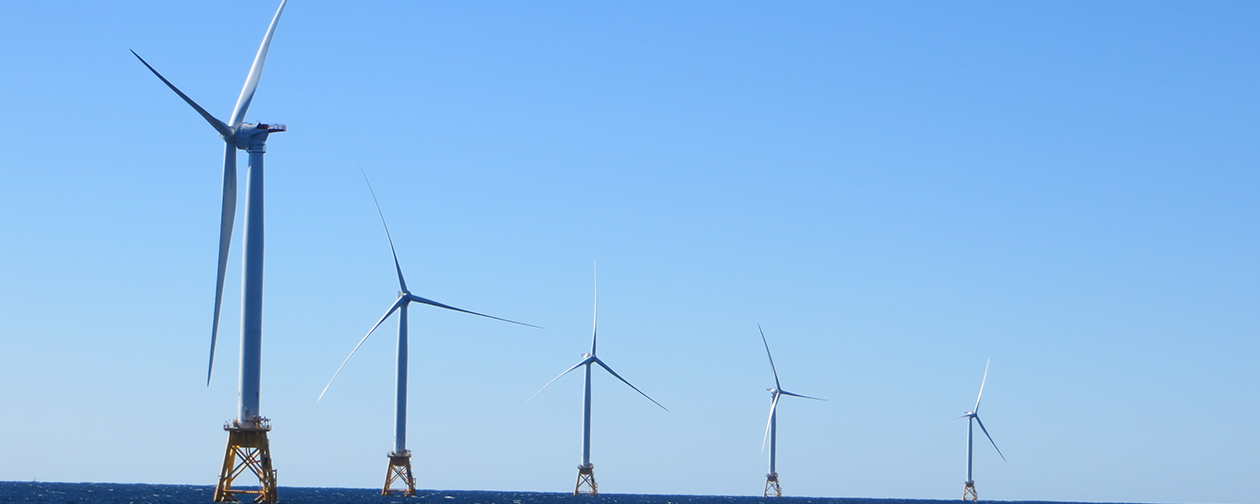Kevin B. Casey, Business Manager
IBEW Joins Others to Keep Good-Paying Jobs on Long Island
It started in Rhode Island, where Providence Local 99 played a key role in the nation’s first offshore wind farm near Block Island. That showed the power of early support for such projects and it’s why the IBEW is part of a consortium of groups trying to bring such a facility to Long Island.
Deepwater Wind, which also developed the Block Island project, plans to build a 15-turbine farm about 30 miles off the southeast coast of Long Island, with fabrication and construction work starting in 2019.
“If we don’t start working on it now, it will never happen,” said Tim McCarthy, a business representative for Long Island, N.Y., Local 25. “We need to be proactive with our politicians.”
McCarthy said local officers initially are hoping for a similar deal to the one Local 99 secured on the Block Island project that employed about 50 members. Some members constructed a temporary construction facility at the Port of Providence and others worked on the turbines there before they were shipped to sea.
Along with other groups, including Long Island Local 1049, Local 25 has suggested the long-shuttered Shoreham Nuclear Plant adjacent to Long Island Sound as a construction site, he said.
The island doesn’t have a port facility that previously served as a manufacturing hub, which was readily available in Providence. But water surrounding it is mostly free of bridges, which kept developers from putting a potential wind farm closer to New York City. Shoreham offers a deep-water port that may not have to be dredged.
And, like Local 99 did with Deepwater Wind in Rhode Island, Local 25 and Local 1049 are trying to help with legislative and regulatory hurdles that may lie ahead. Gov. Andrew Cuomo’s goal is to have 50 percent of New York’s power generated by renewable energy sources by 2030, although there has been no legislation passed that specifically calls for the state to do so.
“We have an obligation to the workforce, which has been the cornerstone of our utilities and energy production,” Third District International Representative Ellen Redmond said. “We urge [the state energy council] to support the training programs that will support new jobs in the offshore wind industry and retrain valuable workers in existing production facilities whose jobs may be phased out.”
That is especially true for Local 1049, where officials want to ensure jobs for skilled workers who might see their current positions phased out by clean energy.
“We’re excited about the prospect of these future energy sources coming off Long Island,” assistant business manager Patrick Guidice said. “We have 600 members doing electrical generation work. These people are mostly working in old fossil plants. These plants are not running as much as they used to and now, they’ll likely be running less.”
Guidice noted that nearly all workers employed by rooftop solar energy companies, another clean energy technology, are nonunion. Local 1049 wants to avoid a similar scenario in the transition to wind energy, he said.
“That’s why we are on this very, very strongly,” Guidice said. “From the beginning, we’ve inserted ourselves into the process, not just with future employers, but also with a strong presence at the state capital with our lawmakers.”
Further down the road, McCarthy envisions a scenario where the IBEW partners with Deepwater and other companies to develop an infrastructure that makes use of union workers in the community. The initial construction for the Block Island turbines was done overseas. Those pieces were sent to Providence, where Local 99 members completed the work.
In the meantime, however, opportunities remain for the IBEW and other trade unions to be involved in the development of wind-generated energy.
“The important thing is building these things,” Local 25 Business Manager Kevin Casey said. “That’s what we’re trying to find on the island, a place to manufacture these things and a port to bring them into.”
Added Local 1049 Business Manager Ronald Bauer: “We’re on board with the governor’s plan if the IBEW is the workforce behind the plan. The people that perform the operation and maintenance work at these facilities should be skilled workers who are represented by the IBEW.”
Wind farms have been common off the coast of western Europe for 30 years, but they have been slow to develop in the United States due to higher costs, environmental concerns and private landowners who believe they will spoil ocean-front views.
Momentum for them appears to be growing, however, as states and municipalities look for alternative energy sources. The 2005 Energy Policy Act, passed by a Republican-controlled Congress and signed by President Bush, provided more incentives for developers and the Obama administration began leasing out swaths of ocean floors to private companies looking to build them.
The Trump administration has proposed massive cuts in the Energy Department’s renewable energy programs, but there are proposals for more than 20 wind farms in U.S. coastal waters.

